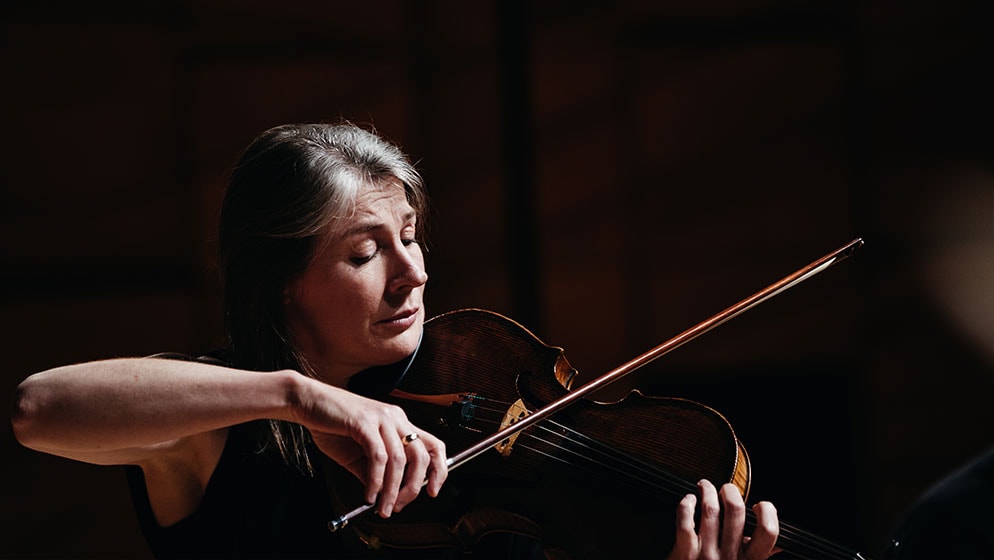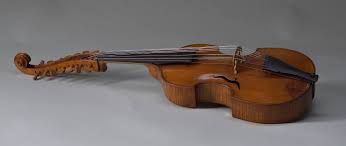by Mike Telin

On Thursday, November 16 at 7:30 pm at First United Methodist Church in Akron, Divall will be the featured soloist in Vivaldi’s Concerto in d for viola d’amore and orchestra.
Directed by Jeannette Sorrell, the program also includes Bach’s Oboe Concerto in F with Debra Nagy as soloist, Vivaldi’s Concerto in d for Two Violins & Cello, and three Bach Sinfonias as well as Brandenburg Concerto No. 4
The program will be repeated on Friday at 7:30 at Lakewood United Methodist, on Saturday at 8:00 at St. Paul’s Episcopal Church in Cleveland Heights, and Sunday at 4:00 at University Circle United Methodist Church. Violinist Andrew Fouts will give a pre-concert talk one hour before each performance. Tickets are available online.
I reached Divall by telephone and began by asking her how she would explain what a viola d’amore is.
Nicole Divall: It was fairly common in the Baroque period, but it’s really a mishmash. It’s like a viol in that it has a flat back and the ribs are flush with the top. Like a violin, it’s unfretted and played under the chin. It also has sympathetic strings like the Norwegian Hardanger fiddle. So you put it all together and you have a viola d’amore.
Mike Telin: I’ve always been curious how you tune the instrument?
ND: It was common practice to tune the strings in the key of the piece you were playing, so a sort of open tuning. So my d’amore has seven strings and seven sympathetic strings, and for this concerto I’ve tuned them in a sort of open d minor chord. I have to check them every now and then, but they’re metal strings, so they don’t require as much tuning as gut strings do.
MT: How much music is written for it?
ND: There’s a lot — I mean, it’s slightly better than for the viola during that period. Bach definitely enjoyed writing for it and obviously the St. John Passion is the most famous of those works. And then Vivaldi clearly was either encouraging the use of the instrument or somebody was paying him to write for it, because he wrote six concertos before he moved on from the orphanage. He also wrote obligato parts for his choral pieces. Attilio Ariosti wrote six Lessons for viola d’amore and continuo and fifteen sonatas. Christoph Graupner also wrote quite a few works for it.
It sort of died out in the late 1700s, but then people started to take interest in it again. Bernard Herrmann wrote for it in his film score for On Dangerous Ground, and Leoš Janáček, for his second string quartet Intimate Letters, had originally planned for that to be for viola d’amore. Then Paul Hindemith wrote a sonata and played it, and Puccini and Prokofiev also wrote for it. So people are definitely drawn in and attracted to it, not just the players, but also the listeners.
MT: Who is making viola d’amores these days?
ND: After having fallen in love with the borrowed instrument, I was like, ‘I have to own one of these.’ So I contacted a maker in England whose name is Jonathan Hill. The instrument was completed and I picked it up in London in November of last year.
Jonathan just won the Woodworkers Guild Award in London. He’s doing really great work, and I’m so happy with the instrument. And he’s a young guy, so I’m hoping people will hear this performance and think, ‘I’d like one of those.’
He’s also solved a lot of issues like making it more simple to change strings, especially sympathetic strings because they thread through the bottom of the bridge and underneath the fingerboard. It’s all very complex and he has come up with really great solutions.
Published on ClevelandClassical.com November 14, 2023.
Click here for a printable copy of this article




